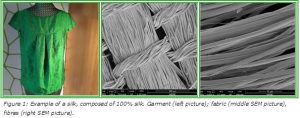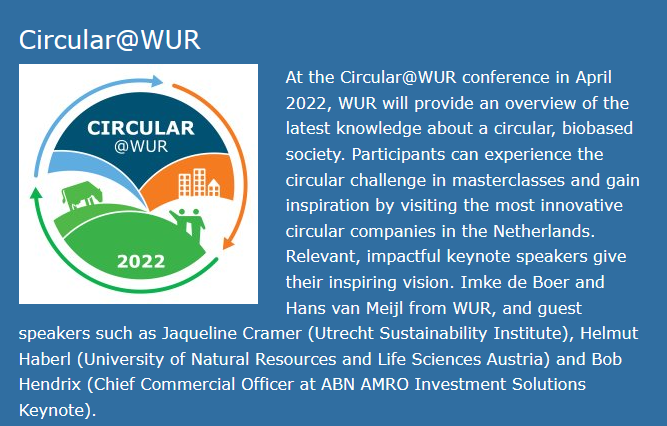Fossil-free fashion
Update 2 February
Approximately two-thirds of all textiles are produced from fossil resources and are ill-suited for recycling or repurposing due to their poor quality. Hence, Wageningen researchers are working on the development of sustainably produced reusable textiles that are made from natural resources that include fibres from agricultural waste streams such as leaves, stems and straw. Consumers can contribute by choosing vintage fashion or clothing made from recycled or certified materials.
‘The level of waste in the fashion industry is enormous. Huge amounts of clothing are produced much too cheaply, and is of such a poor quality that people discard it after wearing it just a few times’, says Pauline Harmsen, senior researcher sustainable textiles. This causes a lot of textile waste. ‘The amounts are staggering. The majority of the discarded textile is unsuited for sale as second-hand textile and ends up in the incinerator.’ Additionally, a small portion is used as stuffing for isolation materials.
“We should focus on durable clothing, with a better production process and better recycling possibilities.”
Much of our clothing contains polyester, polyamides of elastane. These materials are made from fossil resources such as oil. This applies to some two-thirds of all the clothing produced in the world. ‘This material can be produced in bulk at low cost.’ Nevertheless, things must change in the future. Not only is the supply of fossil resources becoming depleted, but much of the contemporary textiles also cannot be recycled.
Hard to recycle
‘In clothing recycling, we see textiles being produced from recycled pet bottles. Textile to textile recycling is often difficult.’ This is because textiles are made up of different fibres that are difficult to separate. Take, for example, stretch jeans that contain polyester and elastane in addition to cotton. ‘If you really wish to recycle, you must start by considering the clothing production method. By designing clothing in such a way that the different materials can be easily separated in an environmentally friendly way, or by using just one type of fibre,’ says Harmsen. Unmixed materials such as wool and cotton can be recycled more easily.
Natural resources
‘We should focus on durable clothing, with a better production process and better recycling possibilities.’ To this end, textiles should be made from natural resources that are produced by the agricultural sector. ‘Cotton is currently the main natural fibre. But cotton plants require a lot of water. There is room for improvement there. However, there is nothing wrong with the plant itself.’ However, textiles can also be produced from plant-based materials in agriculture waste streams.

Wageningen University & Research launched an extensive research programme for sustainable textiles last year. Various researchers from different institutes are involved, from technical material experts such as Harmsen to consumer scientists. Different aspects of sustainable clothing are included, from recycling and repurposing to the development of new materials and consumer behaviour. Within this extensive programme, Harmsen is responsible for the direction of the research.
Her own research focuses mainly on sustainable resources for textile production, such as waste streams from the agricultural sector. Much of this waste disappears into bio-fermentation plants or incinerators. Harmsen: ‘These waste streams may contain fibres that can be used to manufacture textiles.’ Moreover, wood, plant stems and leaves contain cellulose. This material forms the basis of the textile viscose. ‘Sugar, the smallest of the building blocks in these plant-based materials, can also be used to manufacture synthetic textiles.’
Rice, bananas and wheat
Researchers recently concluded an international study on the use of agricultural waste streams for the production of clothing in South-East Asia. The scientists studied over forty crops that could serve as a source of fibres for the fashion industry, including banana stems and rice straw. The Wageningen scientists have now shifted their focus towards Europe, with wheat crops and green waste from greenhouse horticulture. ‘Europe is a great region. There is a textile industry in France and Germany, and Austria has a large fibres producer’, says Harmsen.
‘The different stages of the textile production process span the globe. Much has disappeared from Europe, but there are several businesses that are working to return more of the textiles industry to Europe. Using the left-overs from crops that are grown locally fits in with the local and sustainable production goal.’
Obstacles for sustainable production
Nevertheless, it will take a while before sustainable clothing made from natural resources obtained from plant-based waste streams find their way into the fashion stores. ‘We cannot simply deliver the waste streams to the existing industry; the current production processes are unable to process them. In order to work with new resources, the producers must redesign their production processes. This calls for courage and investments.’ The study is partially conducted in collaboration with the industry. The scientists are also investigating what obstructions there may be and how they can be addressed.

‘Consumers can take the lead, by buying second-hand clothing, for example, or sustainably produced fashion.’ Photo: Shutterstock.
‘More government legislation is needed to place responsibility with the textile producers. The Netherlands and the EU are working on extensive producer responsibility to make the production of clothing and shoes cleaner and more sustainable. This includes the need to trace materials throughout the chain, enabling one to determine where and how products were manufactured. ‘We can learn from the methods applied in the food production industry.’
Opportunity for agriculture
Clothing will become more expensive due to the scarcity of resources. ‘Hopefully, this will mean the end of disposable textiles. We must treat clothing with more responsibility.’ Consumers can take the lead, by buying second-hand clothing, for example, or sustainably produced fashion made from recycled materials or organically grown resources. ‘The consumer can also simply buy less clothing and discard fewer items.’
Harmsen’s dissatisfaction with clothing offered in stores has led her to make her own clothing from fossil-free resources. She focuses on sustainability but also on the material’s look and feel. ‘It is far from easy to find suitable materials. I use mainly certified cotton, wool and oilcloth for a raincoat. I also search for textiles that were recycled in the Netherlands, a fun quest.’
In this sense, the need to transition to natural fibres also offers the agricultural sector an opportunity, she feels. ‘Eventually, we will need all available natural resources to fill the gap that will result if we are no longer able to use fossil resources.’




Hi, I know this might not be her expertise but I was wondering if by any chance she would know of a course on sustainable education. I am a French teacher at a secondary school and I would like to educate myself on how to come up with better strategies and make languages more exciting and sustainable in the long run for students thanks.
Wonderful we are ling in innovative World of networking, with climatically change humanity needs innovative ideals for survival
Hi I know this might happen by means of critical thinking, am Arts and Culture writer turned urban farming ,environment education and nutrition promoter with interest in school i have started over 20 school garden in Nairobi on charity base using domestic waste, Very soon i will launch school garden award in order to motivate school kids given that if you introduce them to gardening they grow greener, Recently i completed online Nutrition Health and Food Safety at Wageningen University. With textile story i will improve given most famous people were inspired by books